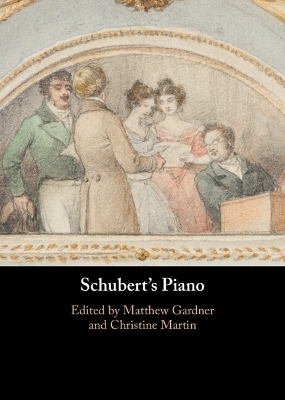
Schubert's Piano
Cambridge University Press (Verlag)
978-1-316-51536-5 (ISBN)
The piano features prominently in Schubert's musical output throughout his career, not only as an instrument for solo piano pieces (for two and four hands), but also in Lieder and chamber music as an equal partner to the voice or other instruments. His preference for the instrument is reflected in contemporary reports by his friends and colleagues as well as in iconography, where he is frequently depicted at the piano. In early nineteenth-century Vienna the piano underwent a rapid period of development, allowing composers to experiment with expanded ranges, sonorities and effects that differ substantially from modern concert grands. Schubert's Piano considers the composer's engagement with this instrument in terms of social history, performance and performance practices, aesthetics, sonority and musical imagery, and his approaches to composition across several musical genres, stimulating new insights into the creative interplay among Schubert's piano compositions.
Matthew Gardner holds an Akademie der Wissenschaften Junior Professorship in Musicology at the University of Tübingen in association with the Neue Schubert-Ausgabe (NSA). His research interests include music in eighteenth-century Britain, on which he has published widely, as well as performance practices, source studies and critical editing. Christine Martin is a Research Associate in the editorial office of the Neue Schubert-Ausgabe (NSA) at the University of Tübingen. She is a member of the edition's Editorial Board and a consultant for the online portal Schubert Digital (in development). Her publications include several critical editions for the NSA, alongside numerous research articles.
List of figures; List of tables; List of music examples; Notes on contributors; Acknowledgements; Abbreviations and conventions; Introduction Matthew Gardner and Christine Martin; Part I. The Piano In Schubert's World: 1. Franz Schubert as a pianist Andrea Lindmayr-Brandl; 2. Between society and solitude: Schubert's improvisations Lorraine Byrne Bodley; 3. The piano in Schubert's lied texts Andreas Dorschel; 4. Schubert's four-hand piano music Thomas Christensen; Part II. Instruments and Performance: 5. Schubert and the Viennese piano Matthew Gardner; 6. Performing simultaneous triplets and dotted rhythms in Schubert's piano music David Rowland; 7. Viennese pianoforte treatises as reflection of Schubert's pianistic audience Mario Aschauer; Part III. Sound and Musical Imagery: 8. Schubert as balladeer Laura Tunbridge; 9. The piano and musical imagery in Schubert's lieder Marjorie Hirsch; 10. Franz Schubert, death, and the gothic Joe Davies; 11. Una corda: Beethoven's and Schubert's exploration of the piano's sonority as a structural resource Hans-Joachim Hinrichsen; Part IV. Understanding Schubert's Writing for the Piano: 12. Schubert and the style brillant: variation and figuration in Schubert's concertante chamber music with piano Christine Martin; 13. Rethinking development and variation in Schubert՚s last piano sonatas: what do the drafts and final versions reveal? Anne M. Hyland; 14. Reflections and echoes in Schubert's waltzes James William Sobaskie; 15. 'Schubert would have no objection if he knew about it': Franz Liszt's reception of Schubert's music Andrea Wiesli; Select bibliography; Index.
| Erscheinungsdatum | 15.10.2024 |
|---|---|
| Zusatzinfo | Worked examples or Exercises |
| Verlagsort | Cambridge |
| Sprache | englisch |
| Maße | 169 x 244 mm |
| Gewicht | 640 g |
| Themenwelt | Kunst / Musik / Theater ► Musik ► Klassik / Oper / Musical |
| ISBN-10 | 1-316-51536-2 / 1316515362 |
| ISBN-13 | 978-1-316-51536-5 / 9781316515365 |
| Zustand | Neuware |
| Haben Sie eine Frage zum Produkt? |
aus dem Bereich


